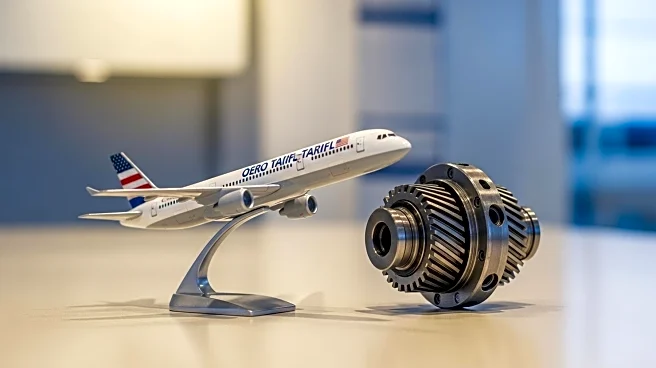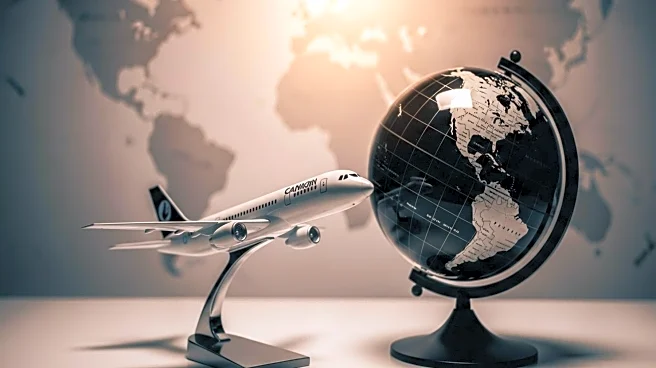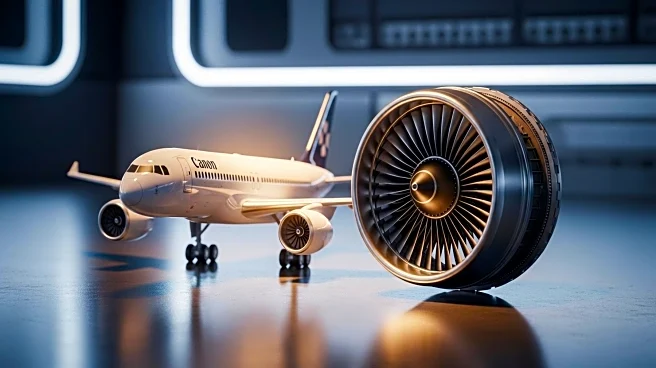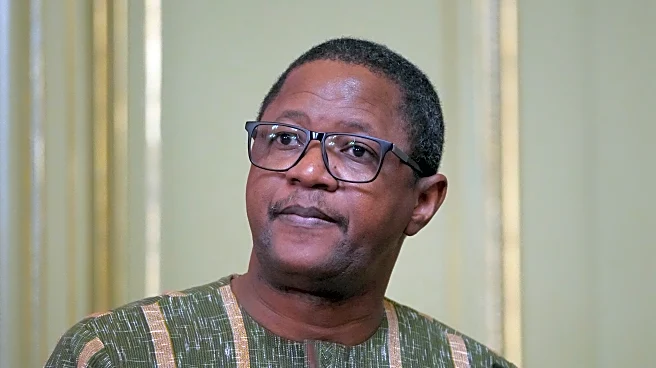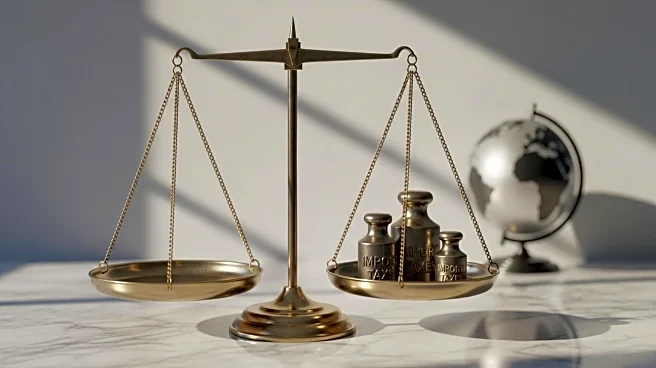What is the story about?
What's Happening?
On July 28, 2025, the United States and the European Union reached a new trade agreement that reinstates the zero-for-zero tariff framework for aircraft and aircraft parts. This agreement was announced by the White House just days before the Trump administration's proposed 30% tariffs on EU aircraft imports were set to take effect. The new framework, officially published on September 25, 2025, exempts aircraft and parts from tariffs retroactively from September 1, 2025. The agreement aims to address trade imbalances and national security concerns while supporting the aviation sector, which relies heavily on transatlantic supply chains.
Why It's Important?
The reinstatement of zero tariffs on aircraft and parts is significant for the aviation industry, which benefits from reduced costs and uninterrupted supply chains. This move is expected to foster innovation and job growth within the U.S. aerospace sector. By eliminating tariffs, the agreement mitigates potential disruptions in the industry and strengthens economic ties between the U.S. and EU. However, Swiss-origin aircraft and parts remain subject to U.S. tariffs, highlighting the complexities of international trade agreements.
What's Next?
Importers and aircraft operators must continue to comply with U.S. importation procedures, including documentation and regulatory requirements. The industry is advised to consult with aviation counsel and customs specialists to ensure compliance. The agreement may lead to further negotiations on trade terms with other countries, potentially expanding the zero-tariff framework to additional regions.
Beyond the Headlines
The agreement underscores the importance of international cooperation in addressing trade imbalances and national security concerns. It reflects a strategic approach to maintaining competitive advantages in the aerospace industry while balancing economic interests. The exclusion of Swiss-origin aircraft from the agreement highlights ongoing challenges in harmonizing trade policies across different jurisdictions.
AI Generated Content
Do you find this article useful?
